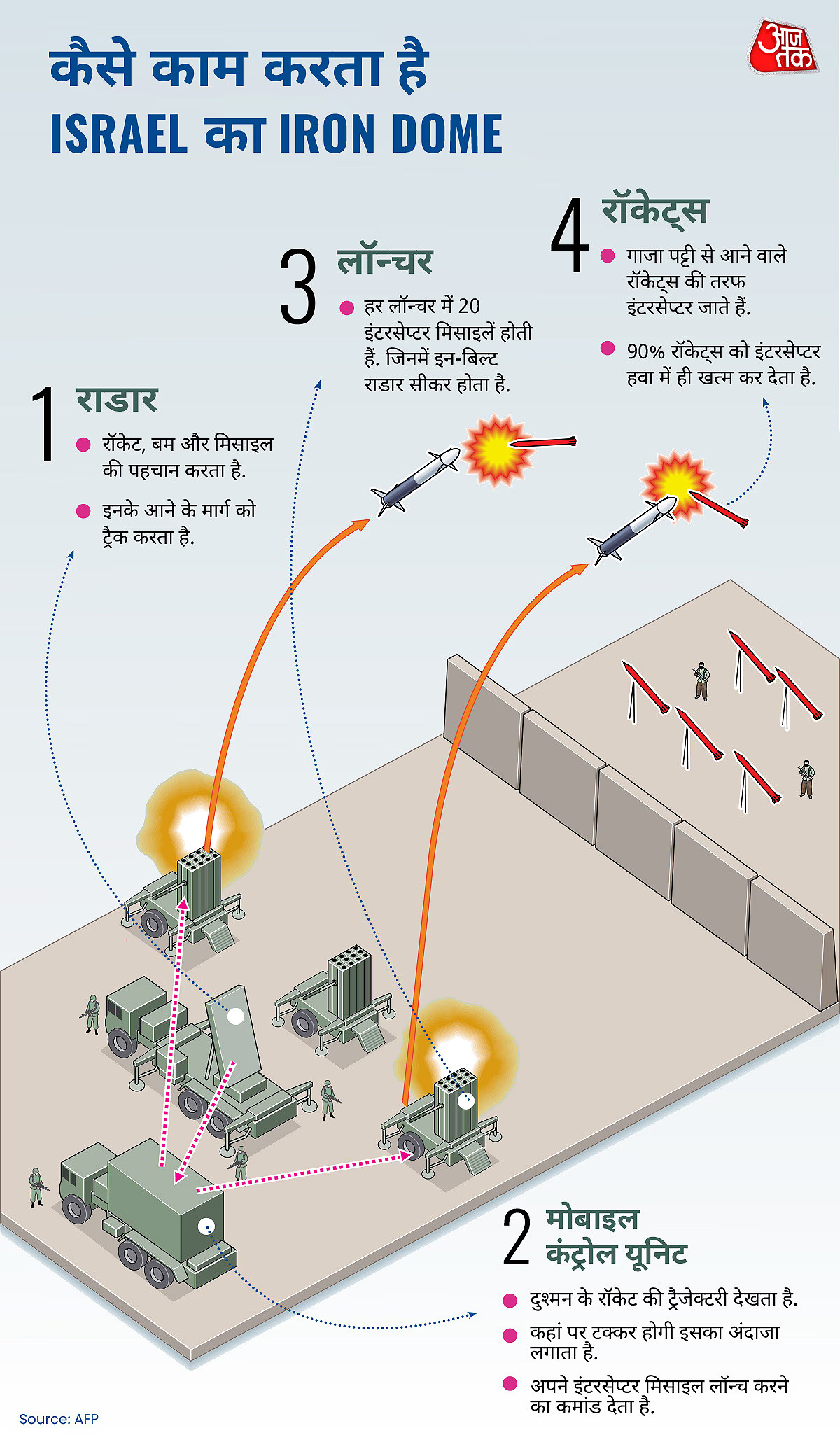Under Operation Rising Lion, Israel targeted Iran's nuclear sites, military bases, and missile facilities, while the United States executed Operation Midnight Hammer, bombing Fordow, Natanz, and Isfahan with B-2 stealth bombers. In retaliation, Iran launched over 450 missiles and 1,000 drones at Israel.
This conflict exposed the limits of Israel's Iron Dome defense system, revealing several strategic vulnerabilities. Let’s explore five major lessons Israel learned from this war that will bolster its future defense strategy.
1. Iron Dome's Limitations: The Missile Defense Challenge
Israel's Iron Dome is among the world's most advanced missile defense systems capable of intercepting short to medium-range missiles and drones. During this war, Iron Dome intercepted 90% of Iran's 450 missiles and 1,000 drones. According to the Institute for the Study of War, Iran's Haj Qasem and Khaibar Shikan missiles managed to bypass the Iron Dome, causing damage in Bat Yam, Tel Aviv, and Be'er Sheva. An attack on Soroka Medical Center injured 76 people.
Read more: Russia and China Stayed Out, No Airspace Control, No Missile Impact... Iran's 5 Big Lessons from the War

Source: aajtak
wrote on X that while the Iron Dome is impressive, it cannot withstand simultaneous hundreds of missile attacks. The conflict revealed limitations in the number of Iron Dome batteries and interceptor missile supplies. Israel must strengthen systems like Arrow-2, Arrow-3, and David's Sling while investing in laser-based defenses, which are cost-effective and quick to deploy.
2. Lack of Civilian Protection and Bunkers
During the war, the sound of sirens and the necessity of sheltering in bunkers became commonplace in Israel. According to Reuters, 24-30 civilians were killed and 300-600 wounded, most due to missile strikes or injuries sustained while rushing to bunkers. Nine people died in Bat Yam. In Tamra, four women from one family were victims of missile strikes. Civilian infrastructure in Tel Aviv and Haifa suffered damage.
Israel must construct more bunkers to prioritize civilian safety. This war highlighted a shortage of public bunkers and civilian protection measures in Israel. Going forward, Israel must focus on modern bunkers, early warning systems, and emergency training in every city while securing schools and hospitals.
Read more: Casualties and Destruction: The Toll on Military Bases and Cities After 12 Days of War

Source: aajtak
3. Power of Espionage and Intelligence
Israel's Mossad and military intelligence unit 8200 played crucial roles in this war. According to an Atlantic Council report, Mossad deployed drones and weapons within Iran, targeting 21 IRGC commanders and 10 nuclear scientists. Israel obtained precise information on Iran's air defense systems and missile facilities, inflicting significant damage on sites like Natanz, Parchin, and Khojir.
However, there were gaps in Israel's intelligence. Iran managed to relocate some missiles to secret locations, which Israel had no knowledge of. On X,
wrote that Mossad performed brilliantly, but tracking all of Iran's missile deployments proved challenging. Israel must bolster cyber intelligence, satellite surveillance, and human intelligence capabilities in the future.
Read more: China Provided 1000 Tons of Rocket Fuel for Iran’s Khaibar Shikan Missiles! The Deceptions of the Dragon Begin to Unfold
4. Need for Regional Allies and International Support
In this conflict, Israel secured backing from the U.S. and G7 nations. In Operation Midnight Hammer, the U.S. utilized seven B-2 stealth bombers and 125 planes to attack Iran's nuclear sites. Jordan and Saudi Arabia granted use of their airspace, providing Israel's aircraft passage. However, countries like Turkey and Qatar condemned Israel, causing regional isolation.
On X,
stated that Israel needs regional allies as relying solely on the U.S. is risky. The war demonstrated the necessity of increasing strategic partnerships with other Middle Eastern countries, like Saudi Arabia, UAE, and Egypt. Furthermore, strengthening diplomatic relations with organizations like the UN and IAEA is crucial for ensuring future global support.

Source: aajtak
5. Managing Economic and Social Impact
The war cost Israel 12 billion dollars economically. The Haifa Bazan oil refinery was shut down. Infrastructure in Tel Aviv and Be'er Sheva suffered damage. 100,000 Israelis were stranded abroad. 40,000 tourists and foreign nationals, including 1,200 Indians, were evacuated from Israel. Schools remained closed, and civilians lived in fear.
On X,
estimated that it would take time for Israel’s economy to recover from the war. Israel needs to enhance economic resilience by developing alternative oil supply sources and regenerating tourism. Additionally, initiating social and psychological support programs is vital to maintaining civilian morale.
Read more: India Develops Missile More Devastating Than America's Bunker Buster, Capable of Ending Kirana Hills in One Strike!
Impact of the War and Future Strategy
The war pushed back Iran's nuclear program by years, destroying 15,000 centrifuges at Natanz. Military bases like Parchin and Khojir suffered destruction. Israel, too, faced losses, with 24-30 civilian casualties and 300-600 wounded. The economic toll amounted to 12 billion dollars. According to the Financial Times, Israel weakened Iran's military capabilities, though Iran’s regime remains stable.
Israel must now adapt its defense strategy. Enhancing the Iron Dome, expanding bunkers, reinforcing intelligence networks, increasing regional partnerships, and ensuring economic stability are essential. Investing in laser defense systems and cyber warfare capabilities is crucial to confronting future multi-front attacks.




